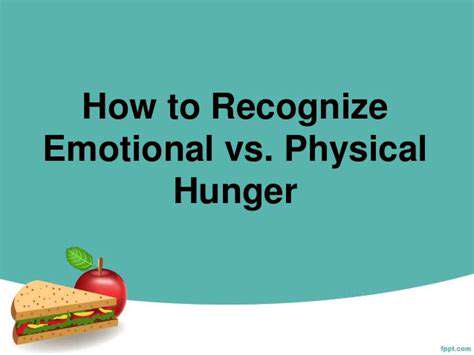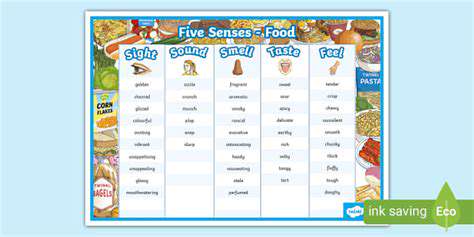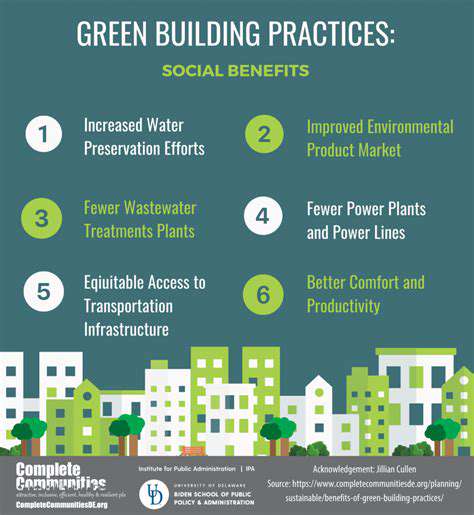
Emotional Eating: Understanding the Root Causes
Emotional eating, a common coping mechanism, involves using food to manage difficult emotions like stress, anxiety, or sadness. This often results in overeating and can lead to a range of health problems. Understanding the underlying emotional triggers is crucial for developing healthy coping strategies. Identifying these triggers, whether it's boredom, loneliness, or anger, can help individuals find more constructive ways to deal with their feelings. It's important to acknowledge that emotional eating isn't inherently bad; it's a learned behavior that can be unlearned with the right support and strategies.
Beyond the immediate satisfaction food provides, emotional eating often stems from unmet needs. These needs can range from a lack of social connection to feeling unappreciated. Addressing these underlying needs is key to breaking the cycle of emotional eating and fostering healthier relationships with food and emotions. Seeking support from a therapist or counselor can provide valuable insight into these underlying issues and guide individuals toward more effective coping mechanisms.
The Impact of Emotional Eating on Overall Well-being
The consequences of emotional eating extend far beyond the scale on a weighing machine. It can significantly impact overall well-being, affecting both physical and mental health. Overeating can lead to weight gain, increasing the risk of obesity-related diseases like heart disease and type 2 diabetes. Furthermore, the constant cycle of emotional eating can contribute to feelings of guilt, shame, and low self-esteem, negatively impacting mental health. These negative emotions can further reinforce the cycle of emotional eating, creating a vicious cycle that is difficult to break without intervention.
Moreover, emotional eating can interfere with the ability to make healthy food choices. This can lead to poor nutritional habits, deficiencies in essential nutrients, and a lack of energy. This, in turn, can negatively affect mood and overall energy levels, making it even harder to break free from the cycle. The impact of emotional eating is multifaceted, affecting various aspects of a person's life, from physical health to mental well-being.
Strategies for Breaking the Cycle of Emotional Eating
Breaking the cycle of emotional eating requires a multifaceted approach that addresses both the emotional and behavioral aspects. A crucial first step is to identify the specific emotions and situations that trigger emotional eating. Keeping a food journal can help individuals track their eating patterns and pinpoint these triggers. Developing healthy coping mechanisms for dealing with stress, anxiety, and other difficult emotions is also essential. This may involve practicing mindfulness, engaging in physical activity, or seeking support from friends, family, or a therapist.
Learning to distinguish between physical hunger and emotional hunger is another important skill. Practicing mindful eating, paying attention to bodily cues, and eating slowly can help. By understanding the difference between physical and emotional hunger, individuals can make more conscious food choices and avoid overeating when their emotions are running high. Finally, building a strong support system and seeking professional help when needed are crucial components in successfully breaking the cycle and developing a healthier relationship with food and emotions.
Cultivating self-compassion and understanding is paramount. Remember that emotional eating is a coping mechanism, not a character flaw. With patience, understanding, and the right tools, individuals can break free from this cycle and achieve a healthier relationship with food and their emotions. Acknowledging past experiences and building self-worth is key to this process. Seeking support from therapists, support groups, or healthy lifestyle communities can foster a sense of belonging and provide guidance throughout this journey.
Developing Awareness: The Five Senses of Eating

Developing Awareness: Exploring the Five Senses
Developing awareness involves a multifaceted approach, encompassing a deep understanding and engagement with our surroundings. This exploration often starts with a keen awareness of our five senses – sight, sound, touch, taste, and smell. By actively engaging with these senses, we cultivate a richer, more nuanced understanding of the world around us and within us.
Our perception of the world is fundamentally shaped by our sensory experiences. This heightened awareness allows for a deeper appreciation of the beauty and complexity that exists in every moment, fostering a greater sense of connection and understanding.
Sight: Unveiling the Visual Landscape
Sight, our primary visual sense, plays a crucial role in our daily lives. It allows us to perceive the world around us, from the intricate details of a flower to the vast expanse of a landscape. Developing a heightened awareness of sight involves paying attention to visual cues and details, allowing us to better understand and interpret our surroundings.
Through conscious observation, we can discover hidden patterns and insights, fostering a deeper understanding of the world around us. The subtle hues of a sunrise, the intricate patterns of a spiderweb, and the lively expressions on faces around us can all be appreciated with a sharper focus.
Sound: Listening to the World's Symphony
Sound, another fundamental sense, offers a rich tapestry of experiences. From the gentle rustling of leaves to the roar of a crowd, sound surrounds us constantly. Developing an awareness of sound involves actively listening to the world around us, noticing the subtle nuances of each sound.
Paying attention to the soundscapes of our daily lives can be incredibly revealing. The chirping of birds in the morning, the rhythmic hum of a city, or the soft melody of a song can all offer unique insights and a greater sense of connection to our surroundings.
Touch: Embracing the Sensual World
Touch, a sense deeply intertwined with our physical experience, allows us to connect with the world in a tangible way. From the soft caress of a loved one's hand to the rough texture of a stone, touch provides a wealth of information about our surroundings.
Developing an awareness of touch involves exploring different textures, temperatures, and pressures. This exploration can be as simple as feeling the cool grass beneath our feet or the smooth bark of a tree. This sensory engagement brings us closer to the physical world and fosters a greater appreciation of its richness.
Taste: Exploring the Culinary Landscape
Taste, a sense intimately connected to our culinary experiences, allows us to savor the flavors of the world. From the sweet taste of a ripe fruit to the savory depth of a well-prepared dish, taste provides a unique connection to our food and culture.
Developing an awareness of taste involves experiencing a wider range of flavors and textures. This exploration can lead to a deeper appreciation of the culinary arts and a richer understanding of our own preferences.
Smell: Discovering the Aromatic World
Smell, a sense often overlooked, plays a powerful role in our memories and experiences. From the sweet fragrance of flowers to the pungent aroma of rain, smell can evoke powerful emotions and memories.
Developing an awareness of smell involves paying attention to the subtle scents that surround us. This can be as simple as noticing the scent of freshly cut grass or the aroma of baking bread. These sensory experiences can enhance our appreciation for the world around us and provide a unique connection to our surroundings.
Integrating the Five Senses: A Holistic Approach
Cultivating awareness of all five senses is not merely about individual experiences but about integrating them into a holistic understanding of the world. This integration allows us to perceive the world with a heightened sense of clarity and awareness.
By combining our sensory experiences, we gain a richer, more comprehensive understanding of our surroundings and ourselves. This holistic approach fosters a deeper connection to the world and a greater appreciation for the beauty and complexity that exists in each moment.
Building a Sustainable Practice

Defining Sustainability in Practice
A sustainable practice isn't just about reducing your environmental footprint; it's about creating a system that can endure over time. This encompasses economic viability, social equity, and environmental responsibility. Considering these interconnected aspects is crucial for long-term success and positive impact. It's about creating a ripple effect of positive change that benefits both present and future generations.
Sustainability requires a holistic approach, recognizing that our actions in one area can have consequences in others. For example, a business focused solely on minimizing waste might be neglecting fair labor practices, leading to a less sustainable model overall.
Assessing Your Current Practices
Before embarking on a sustainable journey, it's essential to understand your current practices and identify areas where improvements can be made. This involves a thorough self-assessment, examining all aspects of your work, from resource consumption to waste management and ethical sourcing.
Detailed records of energy usage, water consumption, and waste production can pinpoint areas needing the most attention. This data provides a benchmark for measuring the effectiveness of future changes and allows for informed decision-making.
Implementing Sustainable Strategies
Once your current practices are understood, you can develop and implement sustainable strategies. This might involve adopting renewable energy sources, optimizing resource use, and implementing waste reduction initiatives.
Strategies should be tailored to your specific context, whether it's a business, a community, or an individual lifestyle. Sustainability is not a one-size-fits-all solution.
Measuring and Monitoring Progress
Tracking the impact of your sustainable strategies is crucial. This involves measuring key metrics, such as energy consumption, water usage, waste generation, and greenhouse gas emissions.
Regular monitoring and analysis of these metrics will reveal the effectiveness of your strategies and pinpoint any areas that require further adjustments. This data-driven approach allows for continuous improvement and ensures that your efforts are yielding the desired results.
Engaging Stakeholders and Communities
Building a sustainable practice often requires collaboration. Engage with stakeholders, including employees, customers, and community members. Their input can provide valuable insights and foster a sense of shared responsibility.
Open communication and transparency about your sustainability initiatives build trust and encourage participation. Involving stakeholders in the process can lead to more creative and effective solutions.
Adapting and Evolving Your Approach
Sustainability is an ongoing journey, not a destination. Your approach needs to adapt and evolve as new information and technologies emerge.
Staying informed about best practices, innovations, and emerging challenges in sustainability is essential. Continuous learning and improvement are key to maintaining a truly sustainable practice over time.
Celebrating Successes and Learning from Setbacks
Acknowledge and celebrate the successes achieved along the way. This reinforces positive momentum and motivates further efforts.
Don't shy away from setbacks. Use them as opportunities to learn, adapt, and refine your approach. Analyzing what didn't work allows for continuous improvement and a stronger, more resilient sustainable practice.